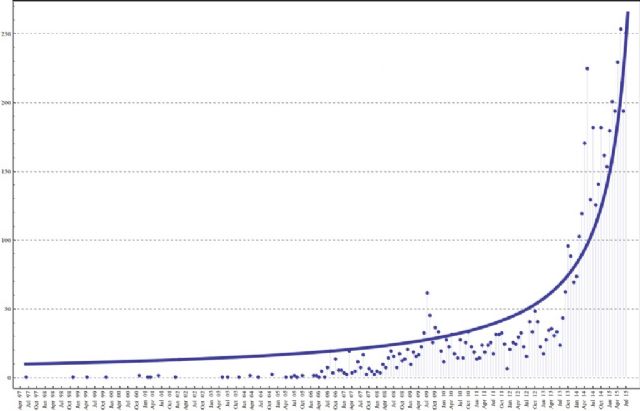Indiepocalypse - are the indie developers digging their own grave?
The numbers leave no place for illusions – the recent boom of independent games on Steam will be the demise of many debuting developers and games.

Development and distribution of independent software has never been so easy before. That’s not an opinion – that’s a fact. The indie market has seen an enormous growth; it has its own gurus and launches hundreds, if not thousands of games every year. You may say that’s wonderful news: after all, smaller developers are the one thing that can keep AAA titles in check, and many gamers have nothing but words of praise for the underdogs. Except it may blow in their faces, because the constant flood of independent projects is anything but good news for the developers. In the last months, the web was nothing short of being buried with various editorials heralding the coming of indiepocaypse – an oversaturation of the indie market and the subsequent crash that will knock it off its feet, forcing to sell the whole industry to the big publishers. Overdramatic? Perhaps. Nevertheless, it shows numerous, worrying points.
Some of them are evident when you look at the chart above – that thing is in no small part responsible for this commotion. Last August, Anton Savchenko created the chart, using the data gathered by the SteamSpy service, and posted it on Twitter, causing uproar. The message was clear – Steam is being flooded with a constantly rising amount of independent games, most of which turn out to be less than functional and/or lacking a good concept to back them up. If this tendency continues, soon, the biggest digital distribution platform will become a graveyard for pixel-art platformers, run-of-the-mill roguelikes, and all the other typical indie designs. Now, think for a moment that majority of them ends up being played for no longer than 2 hours - in total – and suddenly, the indie gaming market looks like a radical enthusiast of the “quantity over quality” policy. Many were skeptical of those revelations, it’s only natural. Ryan Clark, creator of Crypt of the NecroDancer, thinks that the increase is temporary, and it stems from things like indie developers publishing their older games: „Clearly we will not get to a situation where all humans on earth are making games for Steam”. Clark also denies the possibility for Origin to share the fate of App Store in the near future. For your information, App Store is currently being flooded with ridiculously cheap, in both price and quality, games – mainly, because the mobile gaming market obeys a different set of rules. Let’s say he’s at least partially right, and there’s no need to panic, even so, the current condition of independent digital entertainment doesn’t look good, especially on PCs.

To understand the current standing of indie game industry, we need to trace back the source of its success. It’s not hard to find, to be honest – the critical moment was the end of the last decade and the beginning of the current one, when digital distribution platforms, like Steam or Xbox Live with its Arcade service, began to gain significant influence. With broadband internet access becoming increasingly widespread, digital distribution platforms witnessed a similar rise in popularity, especially among smaller developers – for them, it was a blessing. From now on, they wouldn’t have to worry about physical media and distribution anymore, which enabled them to significantly cut their expenses. First ones to catch wind of the rising new trend got their hands on the mother lode. I’m thinking specifically of Minecraft and some other games, including Fez, Braid or Bastion, that made a big commercial success. Promptly, thousands of people around the world began to wonder: hey, if they could do it, why not me?

At the time, a certain belief was being promoted among the users: with this, anyone can become a game designer. It just conveniently omitted the question, if everybody should become one. The support for indie game developers was on a constant rise: Steam began offering even smaller games, and the constantly improved Unity engine became a cult classic among indie developers, allowing for visuals comparable with AAA titles. At the same time, Kickstarter campaigns helped generate the necessary funds. No wonder the digital entertainment suddenly became the industry to be, and subsequent commercial hits, like Hotline Miami, Don’t Starve or The Stanley Parable, supported the trust that a good game will stand up for itself. Unfortunately, not everyone was blessed with talent and/or creativity. Some initial signs began to hint that a crisis of confidence is about to emerge.
Let’s take the (in)famous Goat Simulator for example – the work, intended as a joke from the very beginning, became a serious project thanks to the media attention. As a result, Coffee Stains Studios achieved a commercial success (although more than half of people, who bought the game, spent less than 3 hours in total actually playing it), but is also spawned a whole new genre of Simulation Parodies that, except for abstract grounding ides, really had not much to offer. I Am Bread or Grass Simulator can serve as an example of indie games that gained recognition through a purposely dumb initial idea and often outshined some more interesting titles. Moreover, the launch of Steam Early Access service didn’t help matters at all – the games you can find there often leave much to be desired in terms of overall quality, and the updates are so rare that Gordon Ramsay would explode, if he ever saw them. Finally, the genre repetitiveness has a negative impact on indie gaming. Especially survival and survival horror games, roguelikes or pixel-art platformers are so popular that it begins to border on fatal overexploitation. As a result, the gamers turn their heads back to well-established brands.
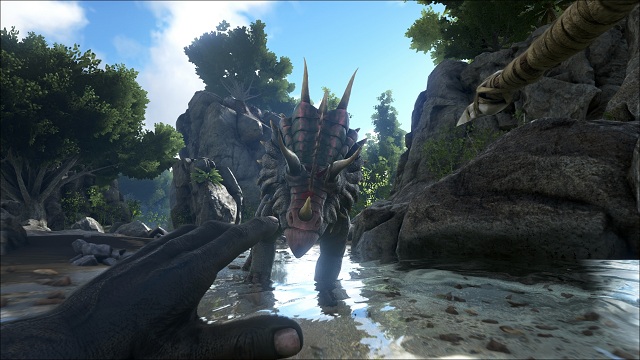
Indie developers have understood that they too can play on players’ sentiments. Games that hail themselves to be “spiritual successors” to old, cult classics have significantly better chances to hit it big. „Nostalgia is a powerful beast that, when treated right, can yield great interest from older gamers as well as interest from newer gamers”, says Chris Bischoff, creator of the game Stasis. But you don’t have to take his word for it, just look at Wasteland 2, a sequel to the game released back in the 80’s! Nevertheless, the game from InXile Entertainment sold on Steam in more than half a million copies with no significant price reductions, which is a result to be jealous of. Although it’s true that the developer team had an ace up their sleeve – Brian Fargo, one of the most recognizable figures in the industry. Big-shot developers switching from AAA to indie are not as rare as you would think – it even spawned a trend, which could be branded as “III”, Triple-I developers.

Under this moniker you find developers, who have a reasonable amount of money for the development process and get the media attention “for free” – be it because of their widely-recognized name or a well-established brand that can be traced back to them. Some examples: Indie developer The Astronauts, the studio behind The Vanishing of Ethan Carter and Soma, is led by a veteran Polish game developer Adrian Chmielarz, who previously worked on games like Painkiller and Bulletstorm. Thanks to the success of Anomaly and This War of Mine, 11 bit studios can now manage their first high-budget project and start business as a publisher. Canadian developer Klei Entertainment has got enough credentials (for good reasons too, they made Mark of the Ninja and Don’t Starve) to ensure that even their less known titles, like Invisible Inc., are selling like hotcakes.
On the other hand, Jonathan Blow, creator of the game Braid and one of the gurus of the indie circles, advises caution when regarding indie games as nothing more than easy money for the AAA developers. „If you are thinking of quitting your AAA job to go indie, you probably missed the bus by 3-4 years at this point.” – as he posted on Twitter. Adrian Chmielarz has a different opinion: „I think spending a few years working for a bigger company and gaining experience, so you can later start your own business is a reasonable thing to do.” – says the co-founder of The Astronauts. His opinion seems to be supported by the success of titles like Firewatch - the game looks interesting, but the press attention surrounding it stems mainly from the team members, who previously worked on titles like The Walking Dead, BioShock 2, or Gone Home. Unfortunately, those who only begin to think of a career in game development rarely start from such favorable position.
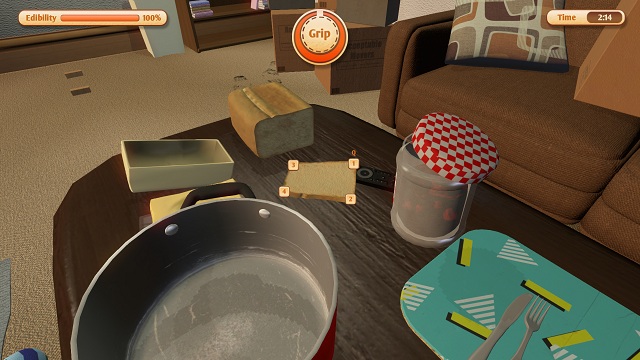
Here’s where the main aspect of the indiepocalypse comes into play: right now, in contrast to the situation just a few years back, chances for a spectacular market and financial performance are actually very low. „‘Good’ isn’t good enough - releasing an indie game in 2015” – says Daniel West, the creator of Airscape: The Fall of Gravity. Recently, Valve launched a broad open-door policy, resulting in Steam being invaded en masse by debuting developers. As a result, some truly interesting games are being drowned out by the flash-flood of pixel-art platformers, survival horrors, and roguelikes. „Even back when the digital revolution struck the market, the most popular digital distribution platform – Steam - offered a rather sloppy filtering mechanism” – mentiones Chmielarz. – „Today, even that doesn’t work. Every day, more than a dozen of games are released via Steam, and most of them are nothing more than a waste of perfectly good pixels”. The quality of the game becomes a secondary thing – what’s important is marketing, press attention and youtubers’ support.
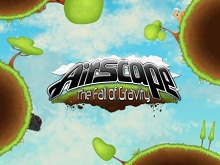
The abovementioned Airscape: The Fall of Gravity was one of the spectacular failures the Steam has ever seen – in spite of decent ratings and numerous prizes the game won on several occasions immediately after its release - when it should gain the biggest attention from everyone interested – the game sold in an astounding number of 150 (!) copies. Daniel West, the project leader, decided to make sure other developers don’t follow in his steps – he wrote an article aligned with the indiepocalypse theory. The article turned out to be a smash hit on the web… and promptly brought some attention to Airscape, which now has been bought by roughly 1000 users. Checkmate, atheists: if the god of irony wasn’t involved in this one, I don’t know who else could have done it.

If you think we’re overestimating the influence of youtubers, just look at the numbers. Almost every time, when a popular channel featured gameplay footage from some obscure game, its sales witness a spike. As an example, PewDiePie had his share in boosting the popularity of the Polish indie game Layers of Fear. Heck, even some of the developers admit via Twitter that they gain sales thanks to such free exposition – Crypt of the NecroDancer earned some additional 60 thousand dollars after it was shown on YouTube!
The problem is that, while the already abundant number of games keeps growing, the amount of attention remains more or less constant. The biggest news sites are physically unable to cover every little indie project, because they make a content selection to match the preferences of the readers. The sad truth is that there are very few gamers who want to read about “that new platformer”, because they are most likely never going to play it anyway. The same goes for youtubers – their earnings are dependent on viewing rates, and the rates are going down when they decide to play a game their viewers find boring. Even if the marketing and PR did their job flawlessly, the success is not assured. Let’s take a look at Sunset – the game who had the attention of the biggest gaming sites and was automatically placed on several “top most anticipated indie game of the year” polls. Post launch, it sold in 4 thousand copies, including those sent to the game’s Kickstarter backers. After the spectacular commercial failure, Tale of Tales - the two-man Belgian developer, had to close their studio. Many other small gaming projects are bound to follow that path, earning any significant money on the occasion of price reductions or bundle sales.

One thing is assured – the salvation won’t be coming from the mobile gaming. There was a time, when everybody believed that that was the place to search for the El Dorado of game development. And for a moment, it was: indie developers could get by without overblown budgets and still hope for an eventual emergence of something like Flappy Bird. In recent years, however, the situation has changed severely, because mobile gaming began to catch the attention of big publishers. With the resources at their disposal, they can set the prices low (or use the free-to-play distribution, where the money comes from advertisements) - below the point where typical indie games are rendered unprofitable - while simultaneously keeping the high quality of the final product. The mobile indie gaming already faced its apocalypse, and many fear that the same thing is coming to stationary platforms.

The statistics are unforgiving in that matter – if Valve doesn’t stop the indie flood, in the near future most of them will generate nothing but losses. The number of games and game developers may be growing, but the money spent on digital entertaining every year not necessarily – as a result, the amount has to be shared between more people. This poses no direct threat to the AAA studios, or the biggest indie developers, but Valve isn’t really keen on employing new filtering rules and risk being pigeonholed as a company hostile to small developers. Most of them are very satisfied with their partnership with Steam. „It’s a platform that provides an opportunity for anyone, who has something interesting or distinctive to offer” – claims Kuba Bonkowski from the debuting developer Crank Goblin, which has recently released their first project, Mooch. – „Al long as everyone has equal opportunities, and the community can decide what it wants, I think it’s a good thing”. At the same time, Bonkowski is aware that this means an increase in the number of mediocre games: “We suspect that a more strict publication policy can emerge at some point.” For now, nothing indicates that such a thing will happen.
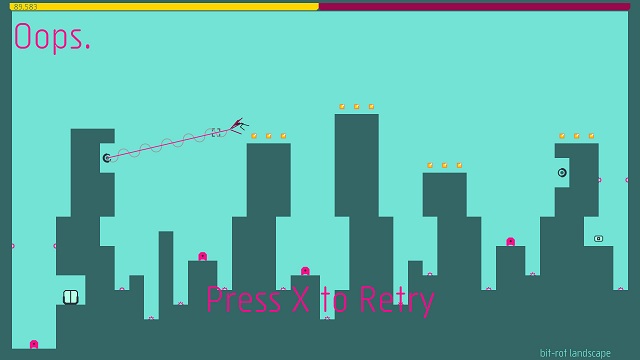

We’ve said much about the financial aspect of the indiepocalypse, but for the developers, user opinions are most likely of equal importance. The problem is that big part of gamers that get a hold of an indie game as a part of a bundle or at cut-price during a sale will never even run the game. According to SteamSpy, among the games bought by Steam users, nearly 40% were never launched!
This doesn’t mean that game development is a waste of time and money. It isn’t – you just need to be thorough, now more than ever, when researching the market and gamer expectations and tread lightly when it comes to funding. For every successful indie game out there, there are several that were a total commercial failure and dozens that were neither but will soon be forgotten. Indiepocalypse? More like a revelation: yes, anyone can become a game dev, but commercial success is more often an exception than a rule. Indie games won’t die, because they are not being made exclusively to earn money – sometimes it’s a hobby, sometimes a way to earn something extra. What will die is the wide-spread theory that they are a gold mine, and hard work is enough to make it big in the industry. Meanwhile, the number of games released on Steam keeps rising, and their creators share the hope of becoming the second advent of Notch.
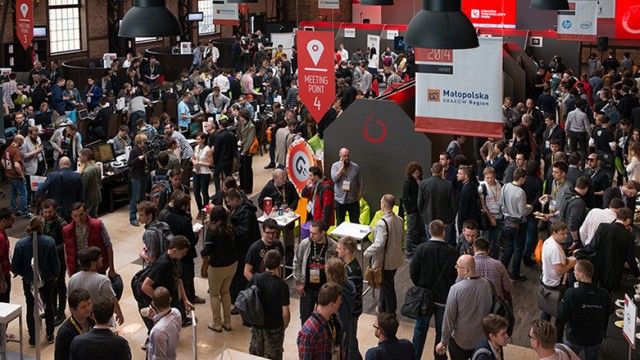

Although this text focuses heavily on Steam, a PC exclusive distribution platform, it needs to be mentioned that the 8th generation of consoles is almost free from this problem. The owners of Xbox and various consoles from the PlayStation family are offered much less indie titles, and most of them are at least half-decent. Better selection and higher publication standards favor the games that offer good and very good quality.
Eventually, this bubble will have to burst, because building a market on hundreds of mediocre titles, most of them left in pristine condition in gamers’ Steam Libraries, is not the wisest business strategy. „You have to be able to make o game, you have to be able to speak about it, you have to know how to advertise it and you have to have a bit of luck" - enumerates Adrian Chmielarz. - "But it's always been like this and not much has changed".” „Indies will need to adapt to this changing landscape more than ever” – adds Chris Bischoff. However, hailing this situation as an „indiepocalypse” in overdoing it. What is happening with the indie market is similar to a discovery of a mother lode in some small town. The pioneers get incredibly rich, and the crowd that follows in their footsteps - significantly less so. Eventually, the gold deposit is depleted and the town is back to where it was before the whole affair. In short, there’s no need to worry. The indie market was born thanks to the “digital revolution” and it will survive the infamous indiepocalypse. This is not the last we’ll be seeing of it – there will many more wonderful indie games, even if not all of them will be as popular a Minecraft. The worst thing is that they will be hard to spot in the sea of mediocrity, and nobody knows how many talented rough diamonds will be lost to us in the meantime.
